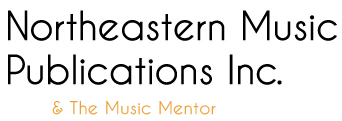by Dr. Randy Navarre
LOOK AT INSTRUMENTATIONFLUTE:
What is the range? Beginning flutes will have a very difficult time playing above high C, and will not be heard below low G.CLARINET:
Do the second clarinets cross the break? If the first clarinets do cross the break, are your players ready? Is the arrangement written in such a way that it is not too difficult for your students? Such as: if the note order at any given point is A, B, C, this will be very difficult. Look to see if the arrangement develops and strengthens your clarinet players' ability to play over the break, and does it give them confidence?SAXOPHONES:
Range-That is the big questions for saxophones. First year players sound terrible above an A or B, and like fog horns below low D.TRUMPET:
What is the range required for both 1st & 2nd trumpets? Can your players reach those notes comfortably?LOW BRASS:
Does the arrangement require low brass? Do you have any low brass? If you have low brass, can they play well enough to carry the part? Check to see if the piece will work without low brass. If it can work without low brass, why? Do the low brass just double the alto sax octaves lower? Is this going to be interesting?PERCUSSION:
Drummers can usually play harder rhythms than the rest of the band. If the music is too simple, they will be bored, and start to cause trouble. Are there auxiliary percussion instruments available to add to the arrangement?BELLS:
In many beginning bands, bells players are not drummers! Does the arrangement have a separate bell part, or do they have to play the flute part? There is nothing wrong with bells playing the flute part(except it is an octave too high), but the students will feel more important if at least on some of the songs they have a special bell part that does not always follow the flute section.HARMONIC INTEREST:
Is this an arrangement with just triads, and a I, IV, V progression, or is it more interesting. Your students hear jazz and rock harmonies everyday. They will be bored if they only play triads in band. There are young band publications with fun music for your beginners. They will practice if it is fun.RHYTHMIC INTEREST:
Rhythms do not have to be complicated to be interesting. The music will be fun if there is simple counterpoint and imitative rhythms. Just because your students are beginners, does not mean they must play unison rhythms at all times.ARTICULATION:
Is the arrangement well marked? Is it suitable for your band?DYNAMICS:
How well marked are the dynamics is the arrangement? Every time there is a rest for more than one measure, there should be a new dynamic marking. Are there so many dynamic markings that it is just confusing to your students? It should be just enough to guide your students, but not so much it gets in the way of having fun.STYLE:
Plan your concert. Make it simple, fun, and have as much variety of music as possible. Plan your rehearsals so when you play your concert the music will be at its peak(good luck!). Try to pick at least one song that is really easy, but sounds hard to the audience.CONTEST:
Pick pieces that are fun, sound big, and are not above the ability of your students. The first song should sound harder than it is, and have a full sound, so it will build the confidence of our students. The last piece should be the harder composition. Contest should be a rewarding experience. It is better to sound good on easy music, than to sound bad on music that is too difficult for your group.



